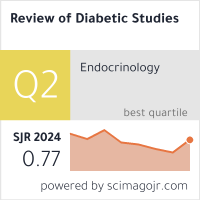Herbal Plants As Novel Anti-Diabetic Agents: Phytochemical Profiles, Mechanisms, And Clinical Evidence
DOI:
https://doi.org/10.1900/92fgeq25Keywords:
Diabetes mellitus, herbal medicine, phytochemicals, hypoglycemic agents, clinical trials.Abstract
Diabetes mellitus, affecting over 537 million people globally, poses a significant health challenge due to rising prevalence and complications like neuropathy and cardiovascular disease [1]. Conventional treatments, such as metformin and insulin, are effective but limited by side effects like hypoglycemia and high costs [2]. Herbal plants offer promising alternatives, leveraging bioactive compounds with multi-target anti-diabetic effects. This review examines ten key plants—Gymnema sylvestre, Momordica charantia, Trigonella foenum-graecum, Cinnamomum verum, Aloe vera, Berberis aristata, Ocimum sanctum, Curcuma longa, Panax ginseng, and Salacia reticulata—focusing on their phytochemical profiles (e.g., gymnemic acids, berberine, curcuminoids), mechanisms (e.g., alpha-glucosidase inhibition, insulin sensitization), and clinical efficacy. Evidence from randomized controlled trials suggests reductions in fasting blood glucose and HbA1c, though results vary due to standardization issues [3]. Safety profiles are generally favorable, but challenges like bioavailability and drug interactions persist [4]. This review synthesizes in vitro, in vivo, and clinical data, highlighting the therapeutic potential of these plants and advocating for large-scale trials to optimize their integration into diabetes management.
Downloads
Published
Issue
Section
License

This work is licensed under a Creative Commons Attribution-ShareAlike 4.0 International License.


